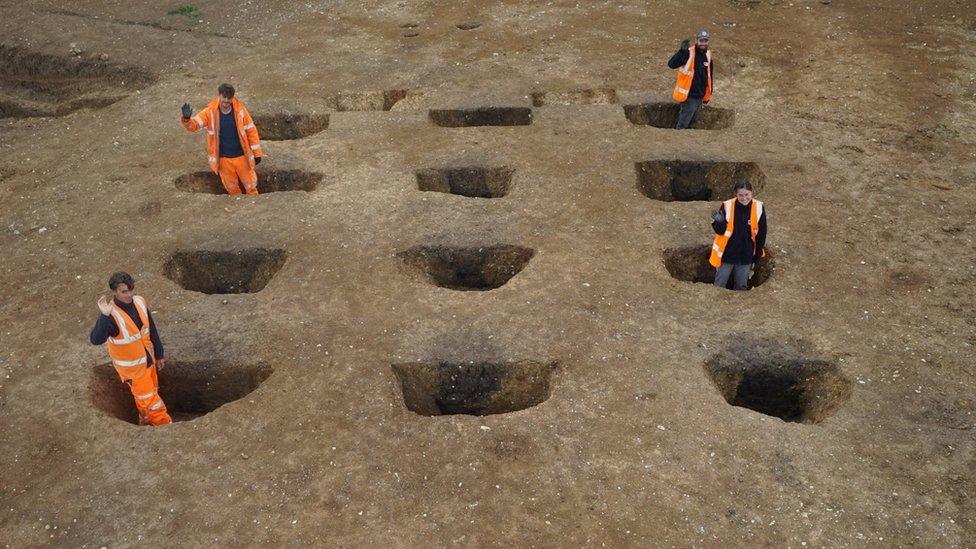Are these the remains of Britain's earliest church?
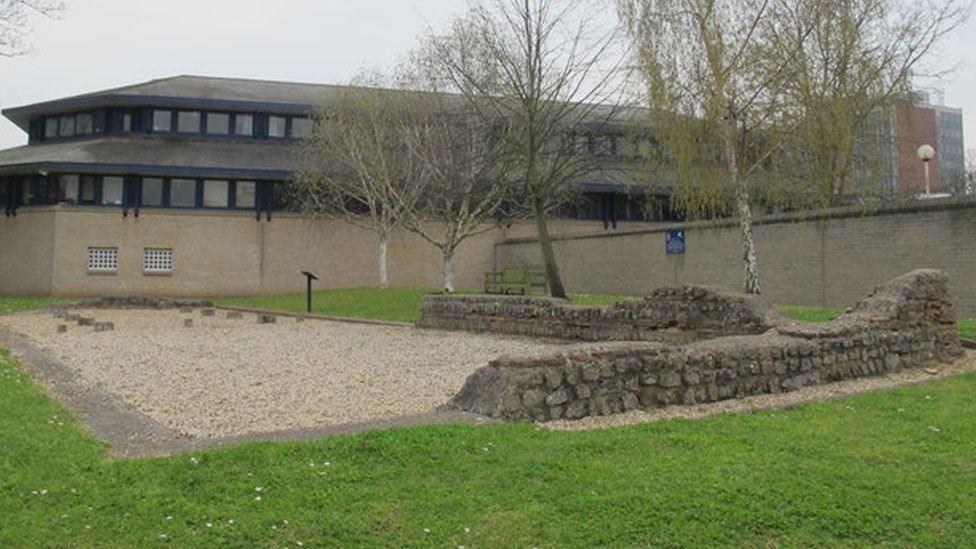
Archaeologist Adam Wightman says while there is no "definitive evidence" the building was a church, a number of clues suggest it was
- Published
Christians are coming together to celebrate their most important festival, Easter. While the arrival of the faith in England is usually associated with St Augustine's mission from Rome in AD597, its roots go further back. Archaeologists now believe 4th Century remains unearthed in Colchester are probably those of Britain's earliest known church. So what does the evidence say?
When it was first unearthed during the Victorian era, it was assumed to be the remains of a Roman temple or shrine.
But now archaeologists believe a 25m by 7.5m (82ft by 24ft) Roman building in the Essex city may have a rather different origin.
The 4th Century foundations in Butt Road, along with dozens of graves, were first excavated by Victorian archaeologist William Wire, and further digs were held in the 1930s and 1960s.
Archaeologists returned in the 1970s and 80s, and made more discoveries, suggesting another way of looking at the finds, external and the building itself.
"It was rectangular, had stone and tile walls and a tiled roof and was aligned east-west, with a curved eastern end," says Adam Wightman, director of archaeology at Colchester Archaeological Trust.
Experts began to suspect the ruins, just a stone's throw from a major roundabout and the city's police station, were in fact those of a Christian church.
The date of the building was crucial, since it was from a time shortly after religious toleration for Christians was established.
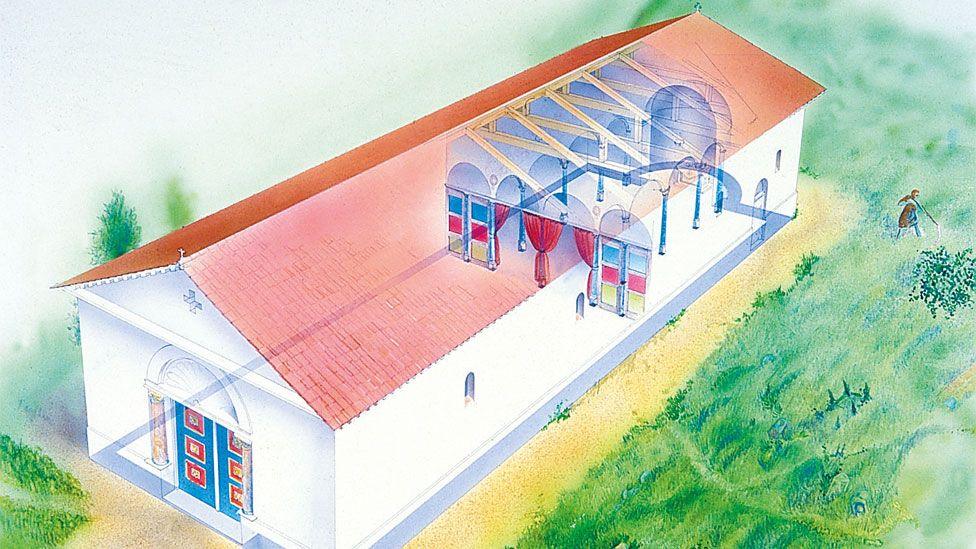
Built between AD320 to 340, some archaeologists have suggested it was instead a mithraeum - a sanctuary or temple of the god Mithras
Mr Wightman admits there is no "definitive evidence", such as the discovery of Christian iconography, that the building must have been a church.
"But you get this wholesale change in burial practice surrounding the building and it's very, very apparent; 61 of the later Roman burials were oriented east-west," he says.
East-west burials were associated with Christian beliefs that Jesus was expected to return to Earth from the east.
Christian churches were also aligned in the same way.
"There is also a lack of the grave goods seen in earlier Roman burials. The Christian belief is the soul goes up to heaven and that you don't need all of this material to take with you," adds Mr Wightman.
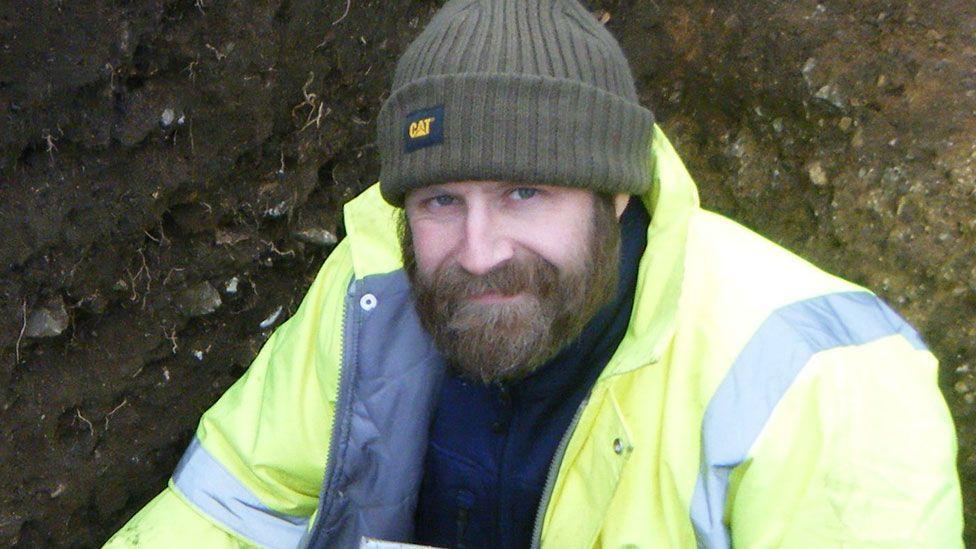
Mr Wightman says there was an abrupt change in burial practices around the building from the 4th Century, suggesting "Christianity coming to Colchester"
In addition, the graves were laid out "very, very neatly... much like a cemetery today".
This contrasts with early Roman cemeteries, where people "just cut across" the old graves, he says.
In the east-west graves, the bodies were buried on their backs, whereas in earlier Roman burials, they were laid out in a variety of positions, including on their sides.
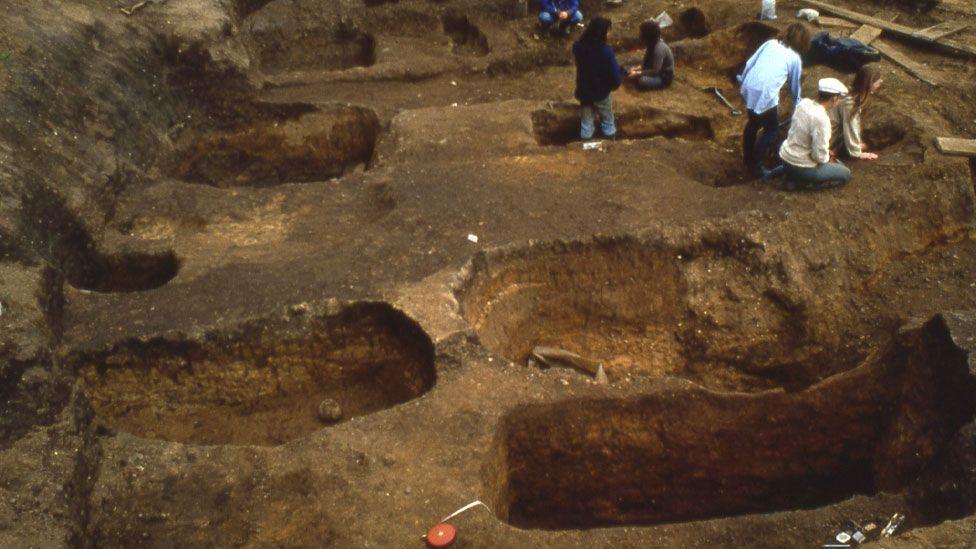
Mr Wightman has excavated many Roman cemeteries in Colchester over 20 years
Finally, a hoard of more than 500 coins, dating from AD330, was discovered on the site, after the Roman Empire became officially Christian.
The building dates from AD320 to 340, was divided by a wooden screen, and seems to have been in use until at least AD400.
"As archaeologists, we're trying desperately as detectives to piece these things together, but there's lots of smaller bits of evidence and it's those weighed together that suggest it's a Christian church," says Mr Wightman.
How Rome became Christian
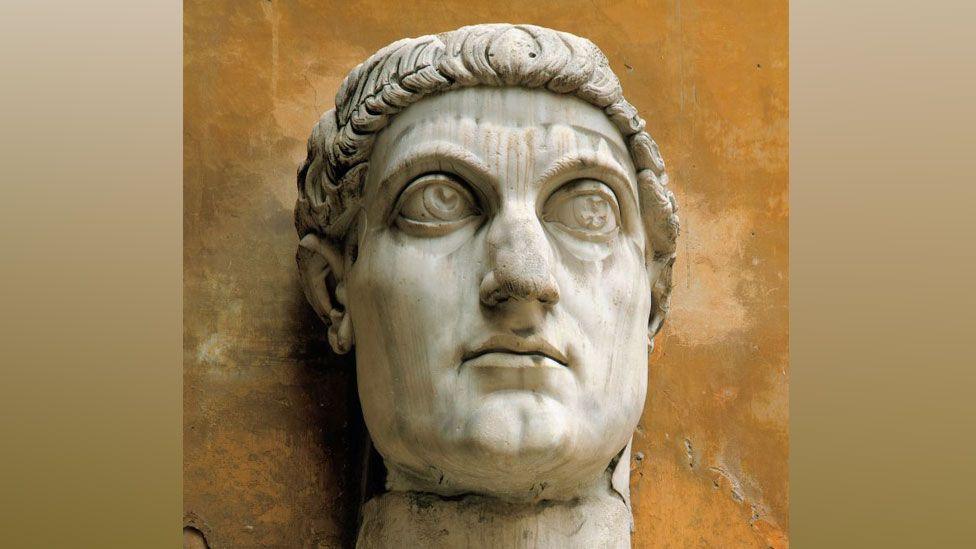
Constantine was proclaimed emperor in York in AD306, while still a pagan, eventually becoming sole emperor in AD324 and attributing his success to Christianity
Ancient Rome was a pagan empire, believing in a pantheon of gods, which included some of its emperors.
Christians rejected this, arguing there was only one true god, and refused to make sacrifices to the Roman deities.
They remained a small cult, suffering periods of persecution by emperors including Nero (AD54 to 68), Domitian (AD81 to 96) and Diocletian (AD284 to 305) - and while some were "thrown to the lions", external, other horrible punishments were more typically meted out.
This changed when the Edict of Milan (AD313), external permanently established religious toleration for Christianity, helped by a soldier called Constantine who attributed his victory in a key battle a year earlier, external to the Christian god.
He became emperor (AD324 to 337), proclaimed his conversion and began the empire's evolution into a Christian state.
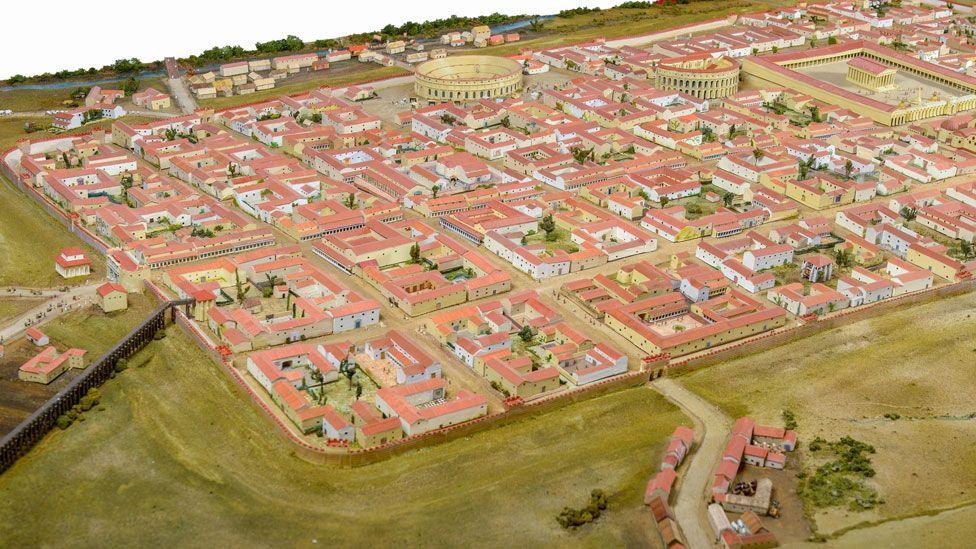
Colchester - or Camulodunum as it was known - was one of the most important Romano-British towns and had extensive trading links across the empire
After the withdrawal of the Roman armies in AD410, Anglo-Saxon settlers from the Germanic lands brought their own pagan beliefs, external.
Christianity did cling on in west and north parts of the British Isles, including Cornwall and Wales, but the re-Christianisation of much of England began with St Augustine's arrival, external on a mission from Rome in AD597.
It is possible the remains of other Romano-British churches have been found at sites, including St Albans, Hertfordshire, and Lincoln, external.
But Colchester is home to some of the best Roman finds in Britain, external, so perhaps it is not surprising that one of these could the foundations of its oldest church.
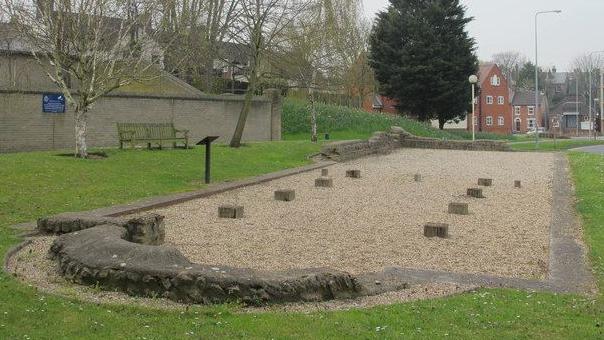
The remains of the building were considered so important, the city's police station was built in a different position on the site to preserve them
Get in touch
Do you have a story suggestion for Essex?
Follow Essex news on BBC Sounds, Facebook, external, Instagram, external and X, external.
Related topics
- Published4 October 2023
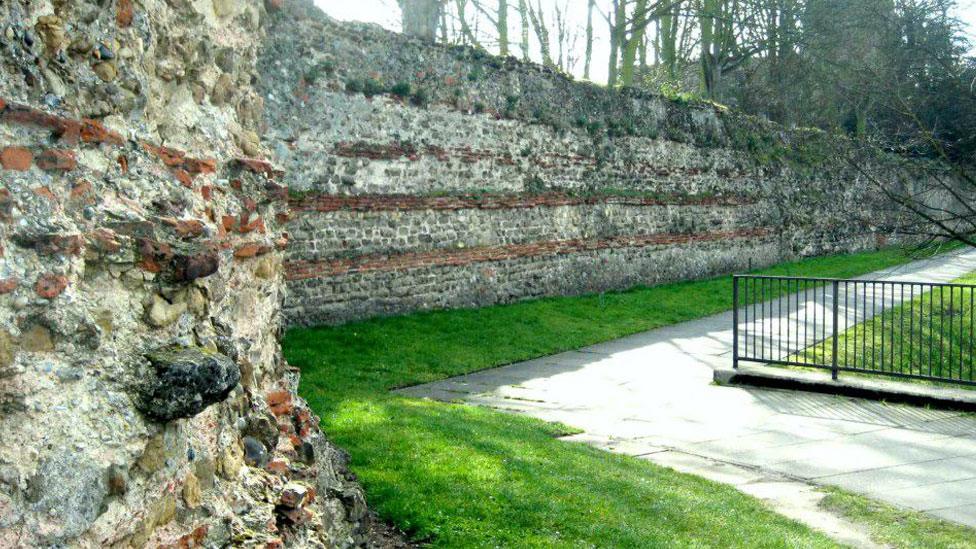
- Published14 January 2021
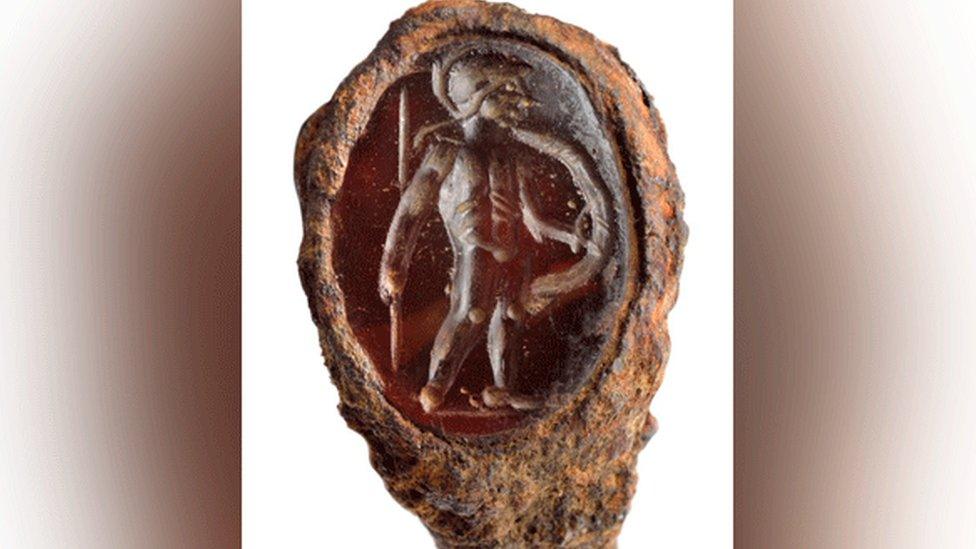
- Published20 December 2020
